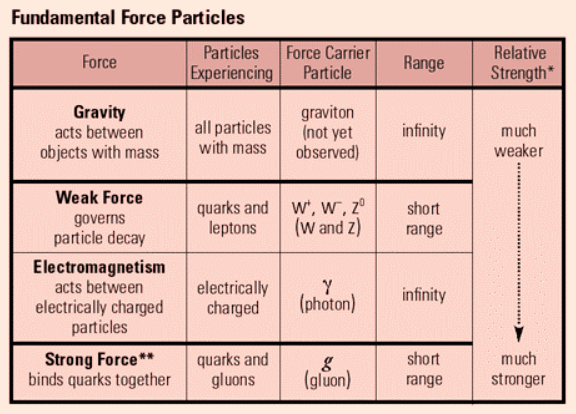Science & Technology
W Boson
- 11 May 2022
- 7 min read
For Prelims: Standard Model of Particle Physics, W Boson, Z boson, Higgs boson.
For Mains: Scientific Innovations & Discoveries
Why in News?
Recently, researchers from Collider Detector at Fermilab (CDF) Collaboration, in the US, announced that they have made a precise measurement of the mass of the W boson.
- It has been stated that this precisely determined value did not match with the estimates from the standard model of particle physics.
What is W Boson?
- The W boson was first seen in 1983 at CERN, located on the Franco-Swiss border.
- In contrast to the photon, which is massless, the W bosons are quite massive, so the weak force they mediate is very short ranged.
- European Organisation for Nuclear Research (CERN) is the world’s largest nuclear and particle physics laboratory and best known as operator of the Large Hadron Collider, which found the elusive Higgs boson in 2012.
- Unlike the photon, which is electrically neutral, the W-plus and W-minus are both massive and charged.
- By exchanging such W bosons, a neutron can change into a proton, for example:
- This is what happens in beta decay, a radioactive interaction that takes place in the sun.
- Thus, the W boson facilitates the interactions that make the sun burn and produce energy.
What is the Standard Model of Elementary Particle Physics?
- The standard model of elementary particles is a theoretical construct in physics that describes particles of matter and their interaction.
- It describes the elementary particles of the world as being connected by mathematical symmetry, just as two objects are connected by bilateral (left-right) symmetry.
- These are mathematical groups generated by continuous transformations from, say, one particle to another.
- According to this model there are a finite number of fundamental particles which are represented by the characteristic “eigen” states of these groups.
- The particles predicted by the model, such as the Z boson, have been seen in experiments.
- The last to be discovered, in 2012, was the Higgs boson which gives mass to the heavy particles.
Why is the Standard Model believed to be Incomplete?
- Because it gives a unified picture of only three of the four fundamental forces of nature — electromagnetic, weak nuclear, strong nuclear and gravitational interactions — it totally omits gravity.
- So, in the grand plan of unifying all forces so that a single equation would describe all the interactions of matter, the standard model was found to be lacking.
- Also, it does not include a description of dark matter particles.
- So far these have been detected only through their gravitational pull on surrounding matter.
How are the Symmetries related to Particles?
- The symmetries of the standard model are known as gauge symmetries, as they are generated by “gauge transformations”.
- Gauge transformations are a set of continuous transformations (like rotation is a continuous transformation). Each symmetry is associated with a gauge boson.
- For example, the gauge boson associated with electromagnetic interactions is the photon. The gauge bosons associated with weak interactions are the W and Z bosons. There are two W bosons — W+ and W-.
UPSC Civil Services Examination, Previous Year Questions
Q. The efforts to detect the existence of Higgs boson particle have become frequent news in the recent past. What is/are the importance/importances of discovering this particle? (2013)
1. It will enable us to understand as to why elementary particles have mass.
2. It will enable us in the near future to develop the technology of transferring matter from one point to another without traversing the physical space between them.
3. It will enable us to create better fuels for nuclear fission.
Select the correct answer using the codes given below:
(a) 1 only
(b) 2 and 3 only
(c) 1 and 3 only
(d) 1, 2 and 3
Ans: (a)
- Basic equations of the Unified Theory described the electro-weak force and its associated force-carrying particles, namely the photon, and the W and Z bosons. All of these particles emerged without a mass. Protons are with negligible mass, but W and Z have mass nearly 100 times that of a proton.
- Theorists Robert Brout, Francois Englert and Peter Higgs made a proposal known as Brout-EnglertHiggs mechanism that gives a mass to the W and Z when they interact with an invisible field, now called the “Higgs field”, which pervades the universe.
- The Higgs boson is the visible manifestation of the Higgs field.
- Just after the Big Bang, the Higgs field was zero, but as the universe cooled and the temperature fell below a critical value, the field grew spontaneously so that any particle interacting with it acquired a mass.
- The more a particle interacts with this field, the heavier it is. Particles, like the photon that do not interact with it are left with negligible mass.
- Like all fundamental fields, the Higgs field has an associated particle – the Higgs boson. Hence, statement 1 is correct and there is no relation of the Higgs boson particle with statements 2 and 3. Therefore, option (a) is the correct answer.





